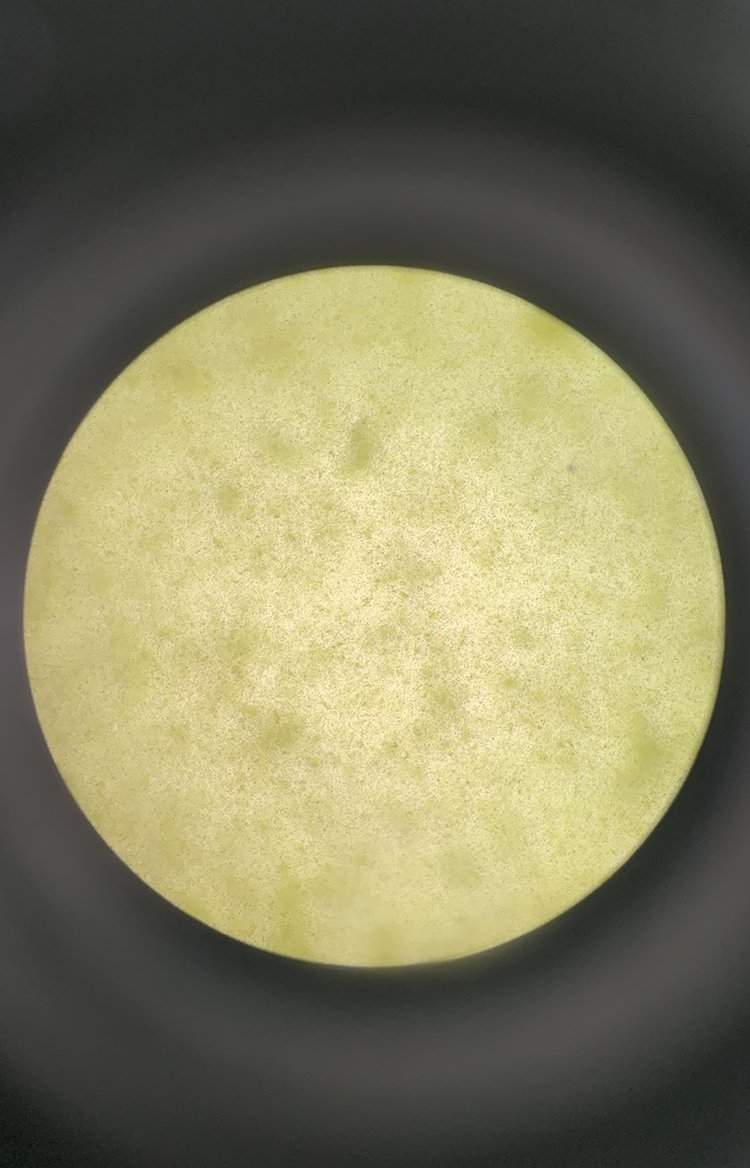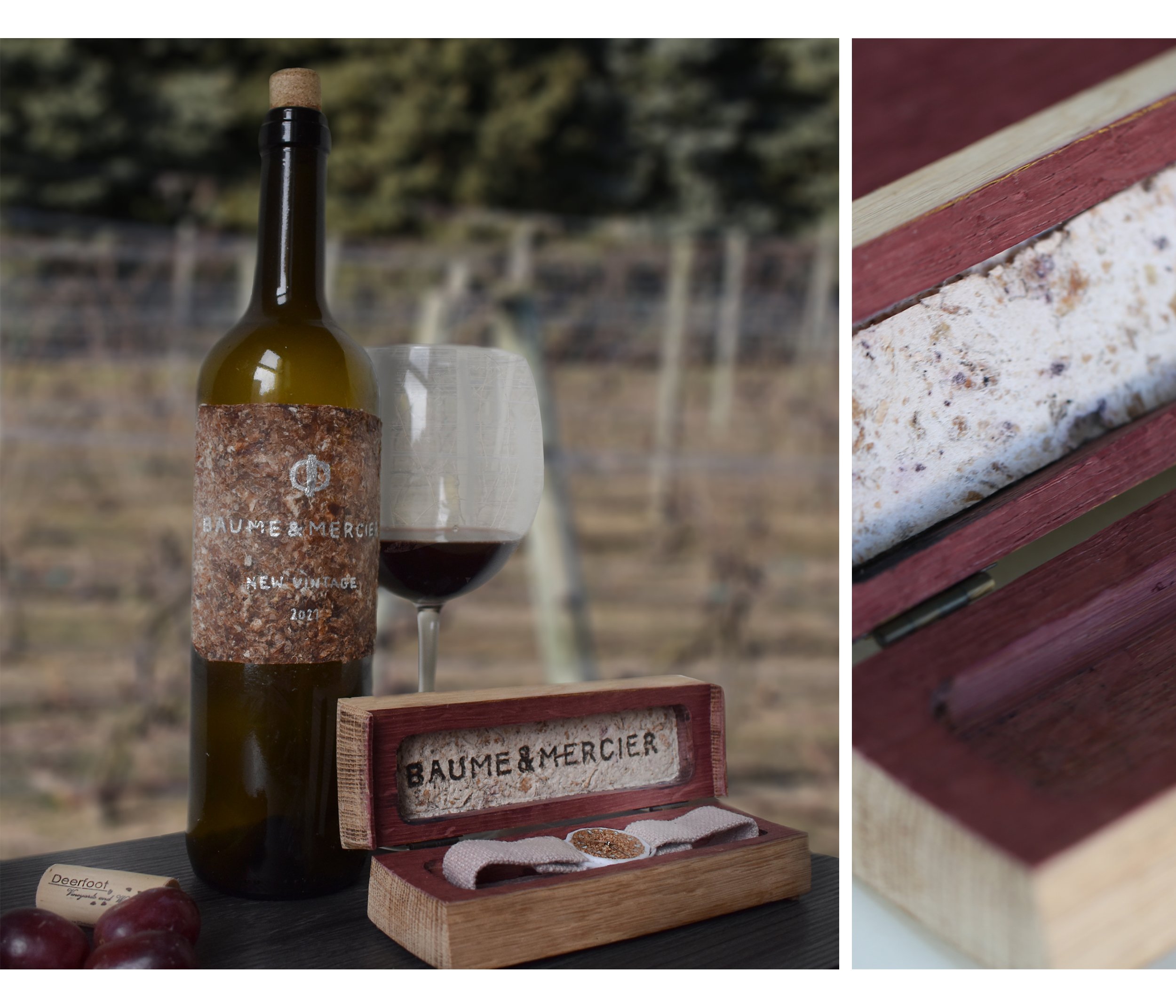Biomaterials
Novel seaweed-based coating embedded with living microalgae to create a living material.
Chlorella vulgaris microalgae.
Mycelium-textile composite.
Chlorella vulgaris microalgae under a microscope.
Chlorella vulgaris microalgae under a microscope.
Mycelium-textile composite and research, exhibited at EcoGen Research Collective Exhibit, Spring 2022. Made in collaboration with Leah Hughes, Romily Rinck and Amir Weirtheimer
This design research project studied mycelium’s animacy and preferred growth conditions on textile knits and wovens. Our project's larger impact looks at how mycelium could further be used tackle textile waste. The MycoTextiles artifact is grown in collaboration with Pleurotus Ostreatus, Oyster Mushroom. The mycelium displays its own animacy by selecting its preference of fiber type and textile structure, leaving an abstracted representation. The mycelium was grown in a liquid culture and honey is used as a nutrient. the quilt design was based on initial experiments.
Materials leftover from wine production, including grape pomace, cork, wastewater, and tartrates, from local PA winery, Deerfoot, were developed into new bioplastics, natural dyes and papers.
A New Vintage asks us to take time, to sip with friends, to appreciate craft, to create circular waste streams, and cultivate awareness for a better tomorrow.
Mycelium-textile composite
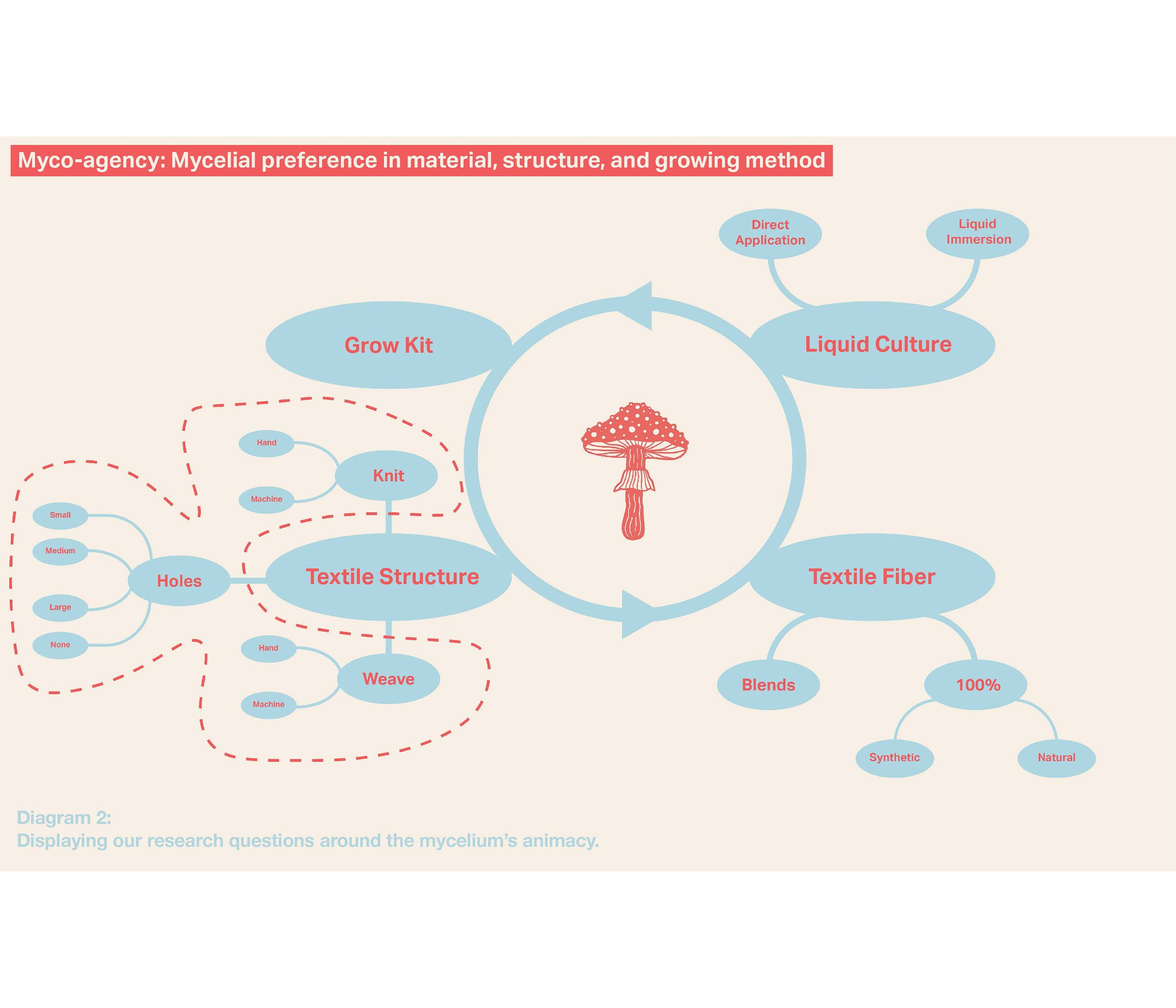
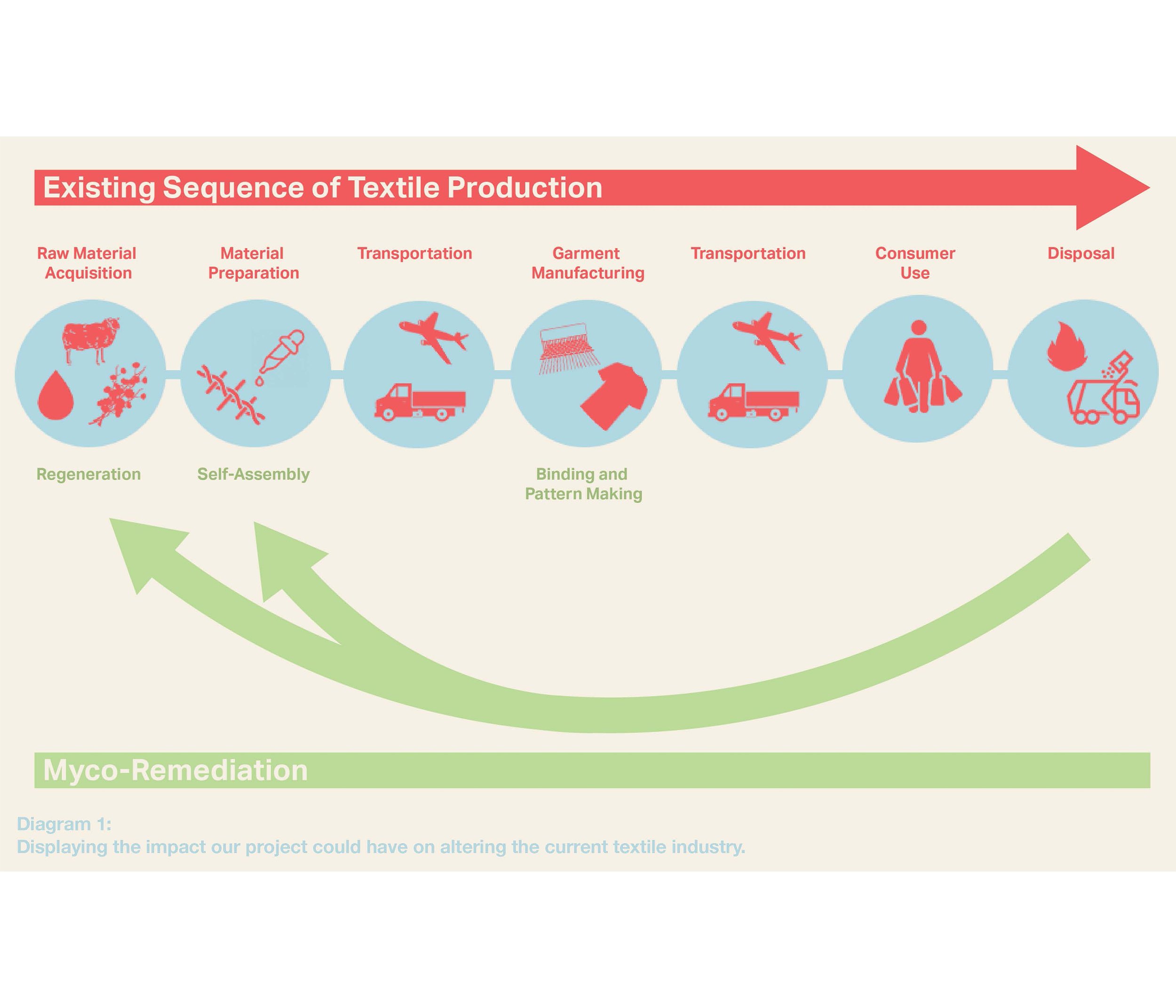
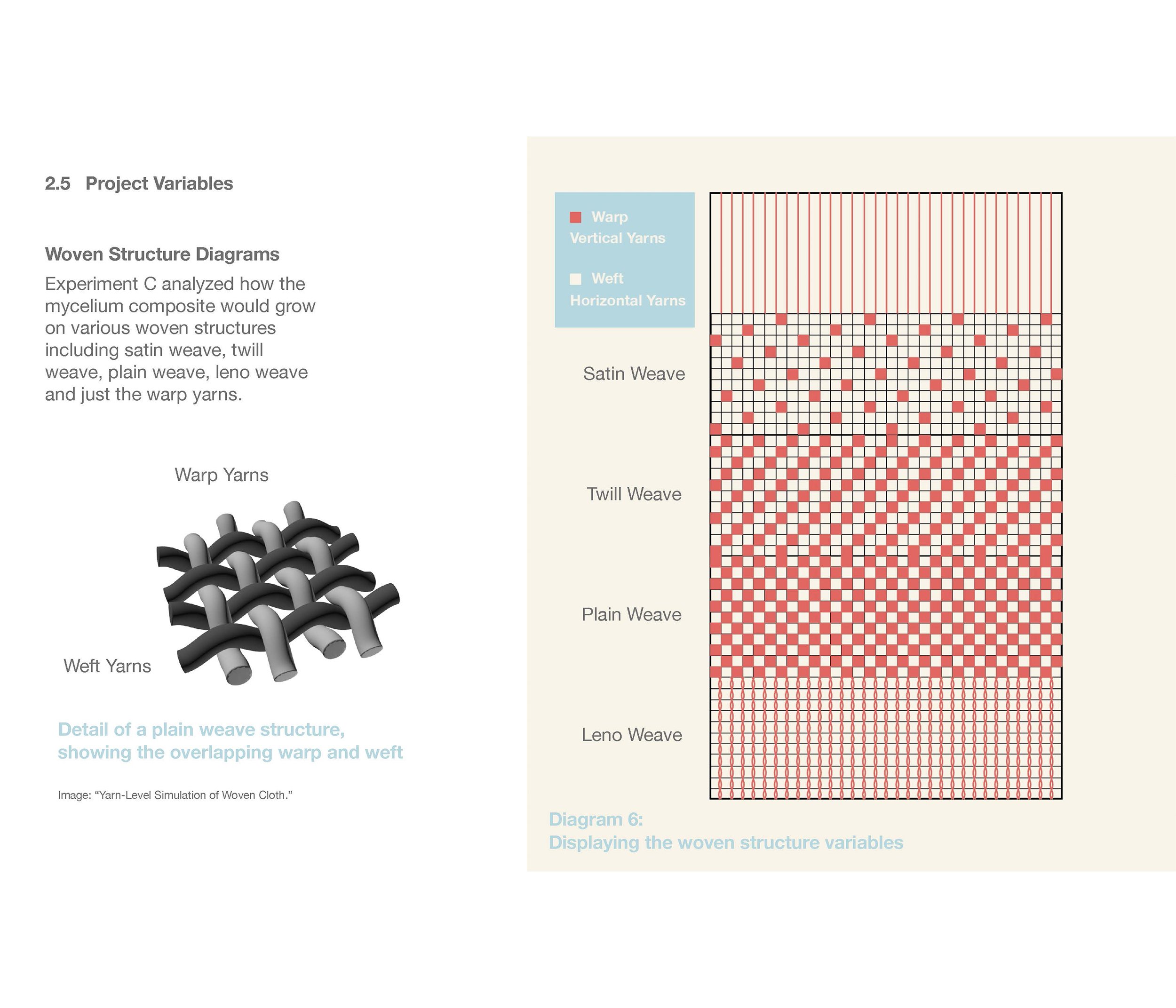
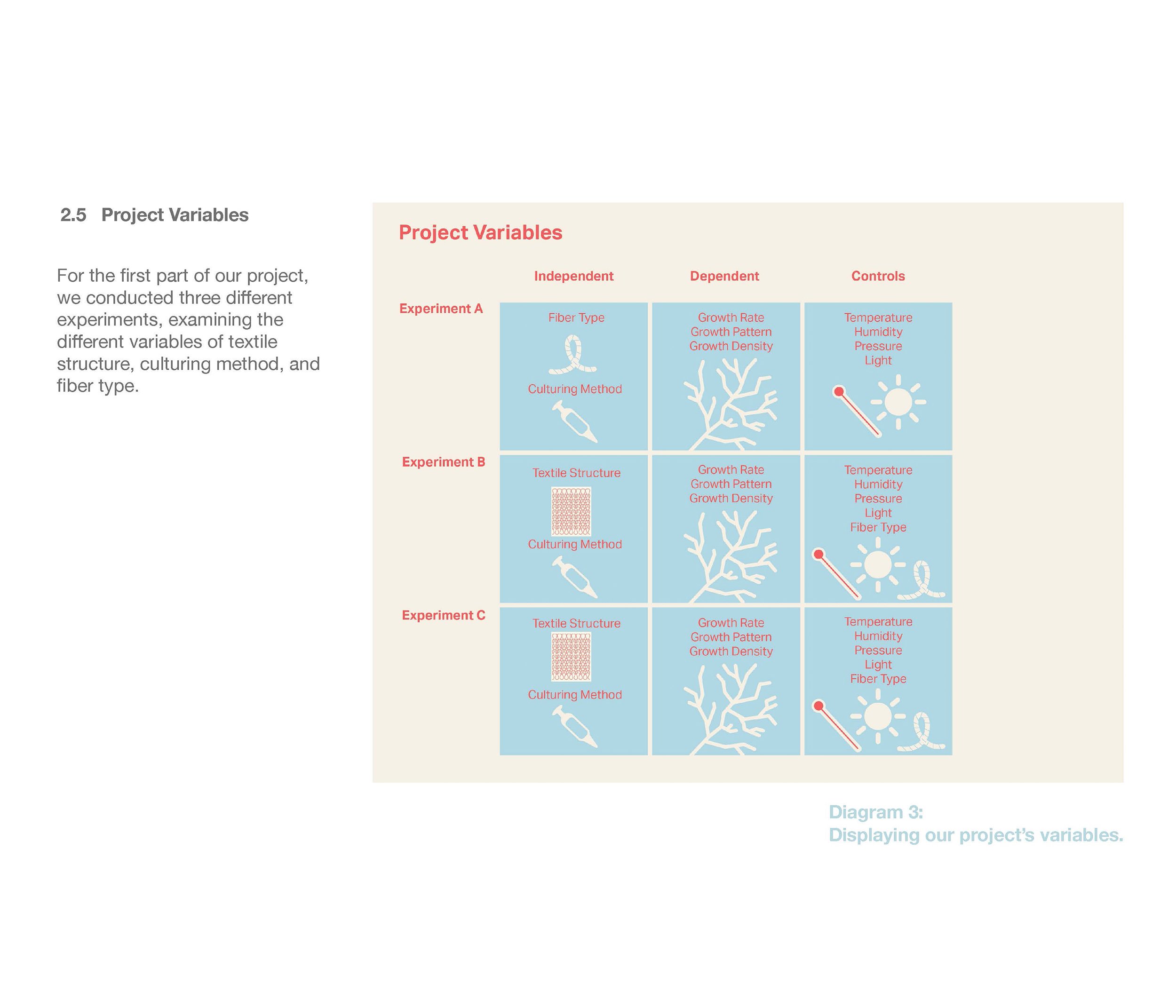
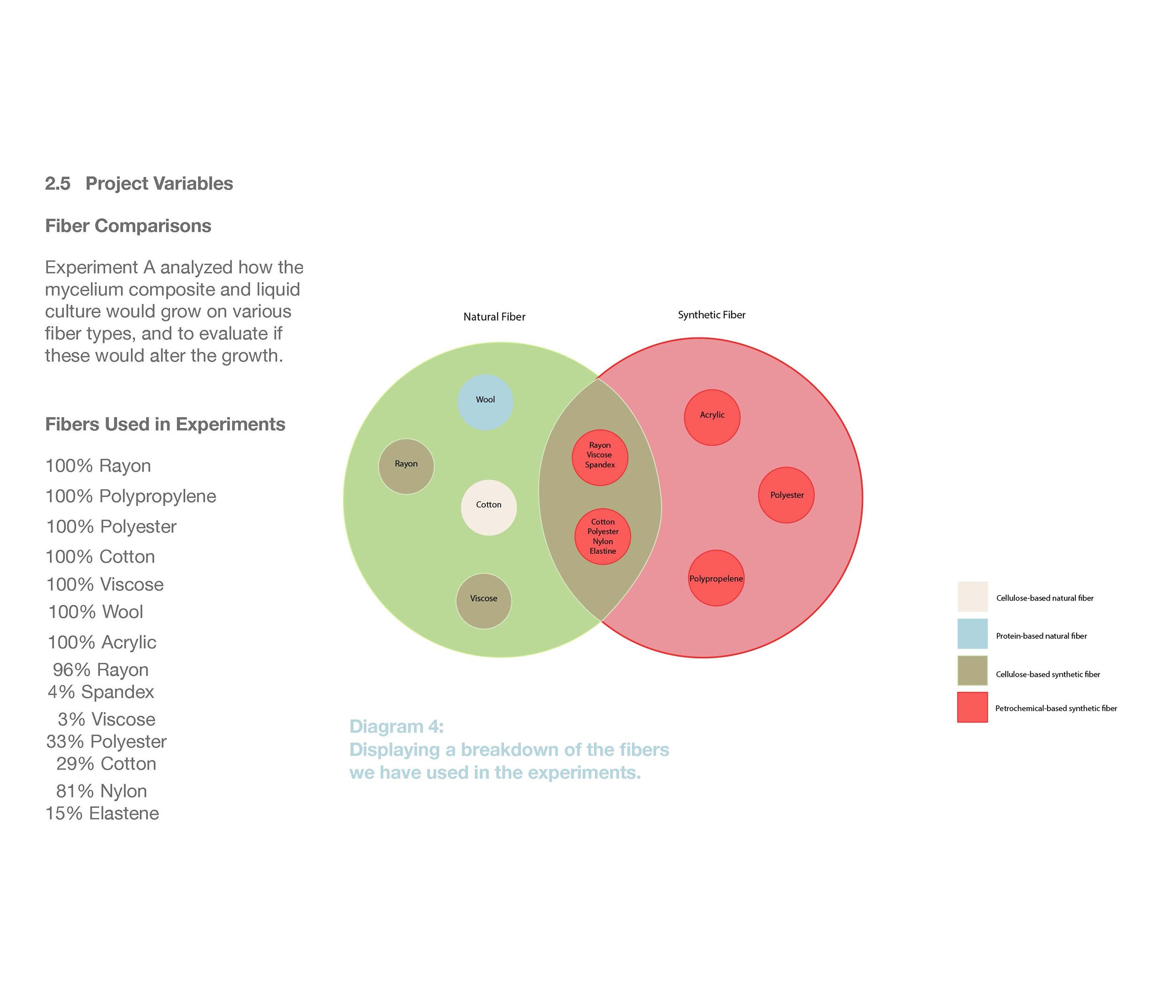

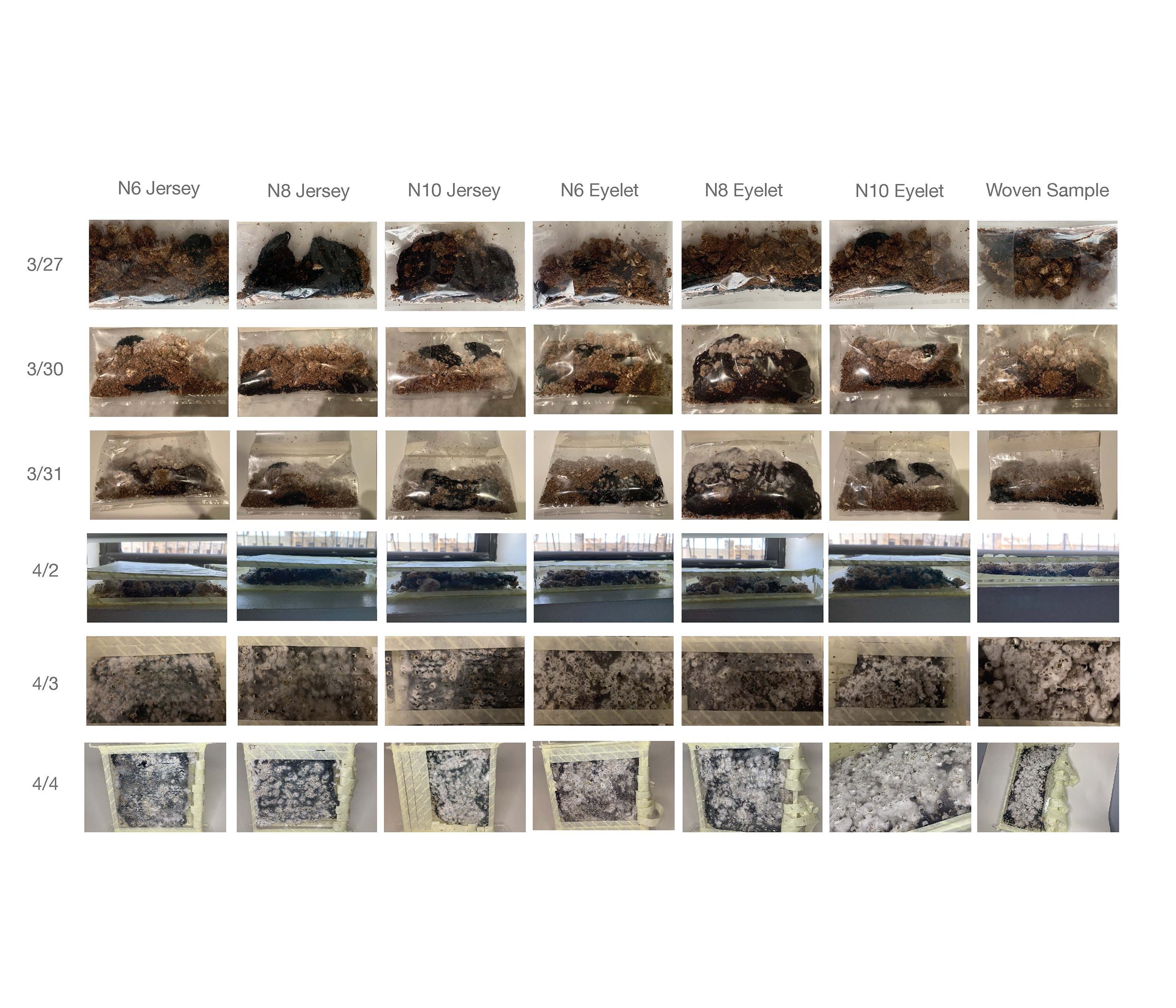
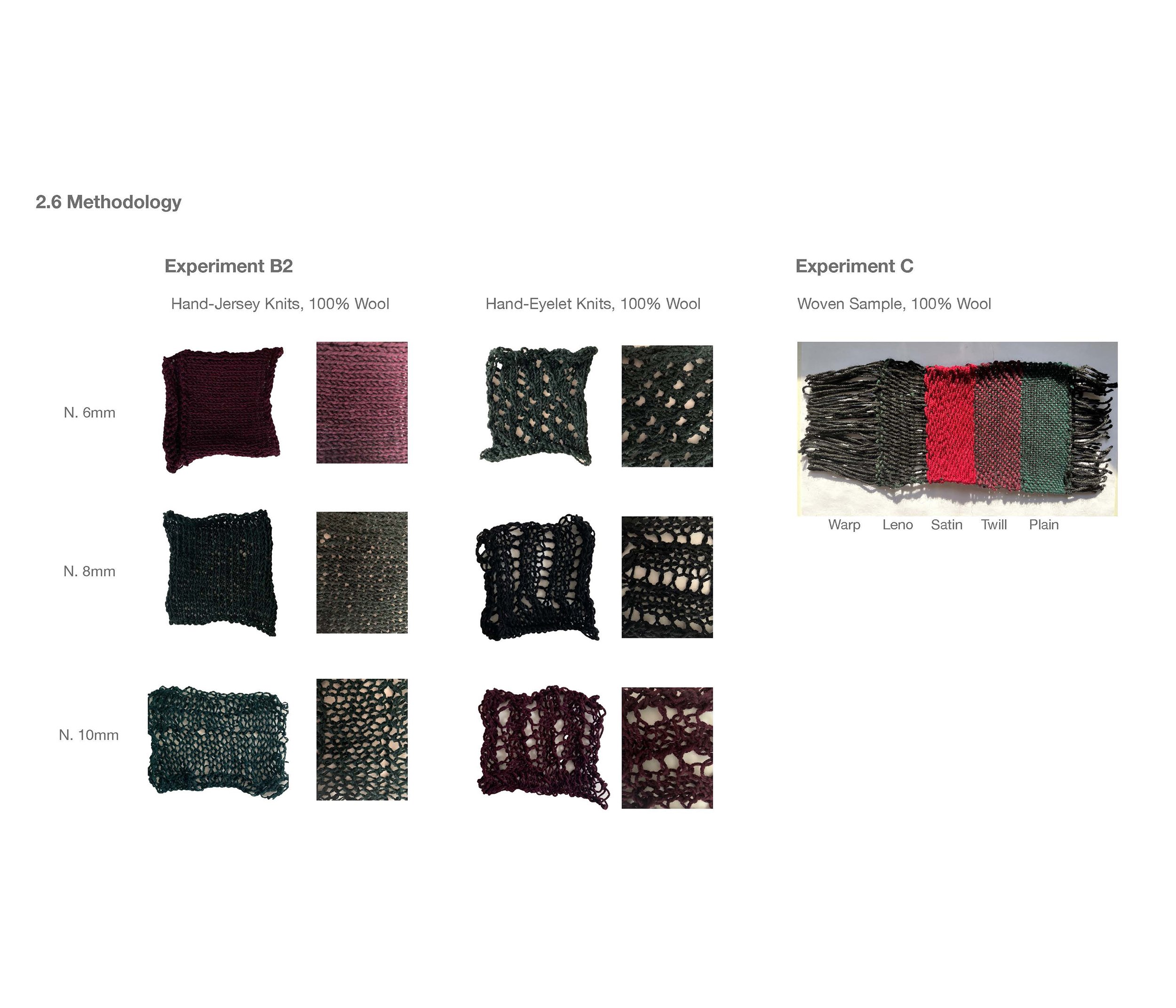
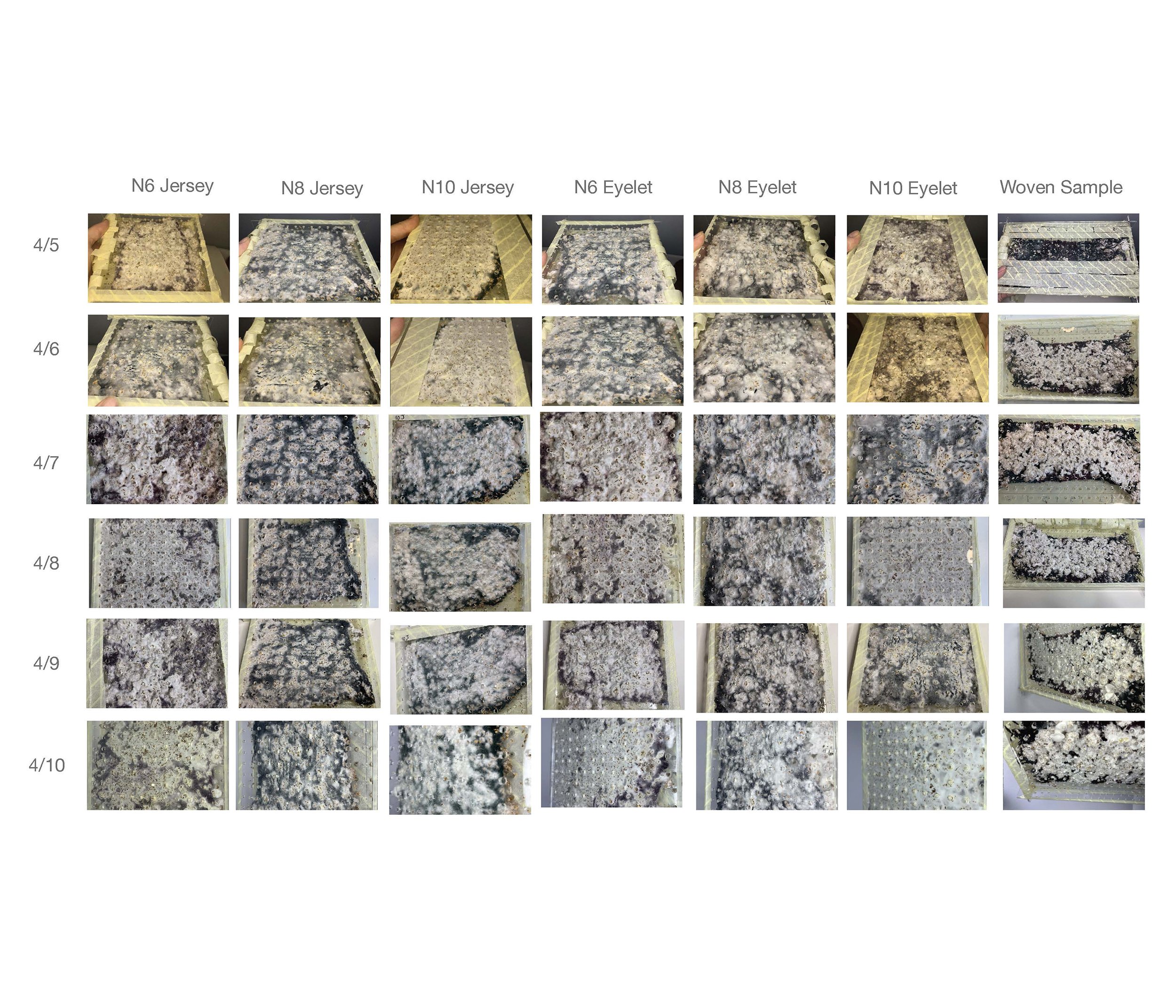
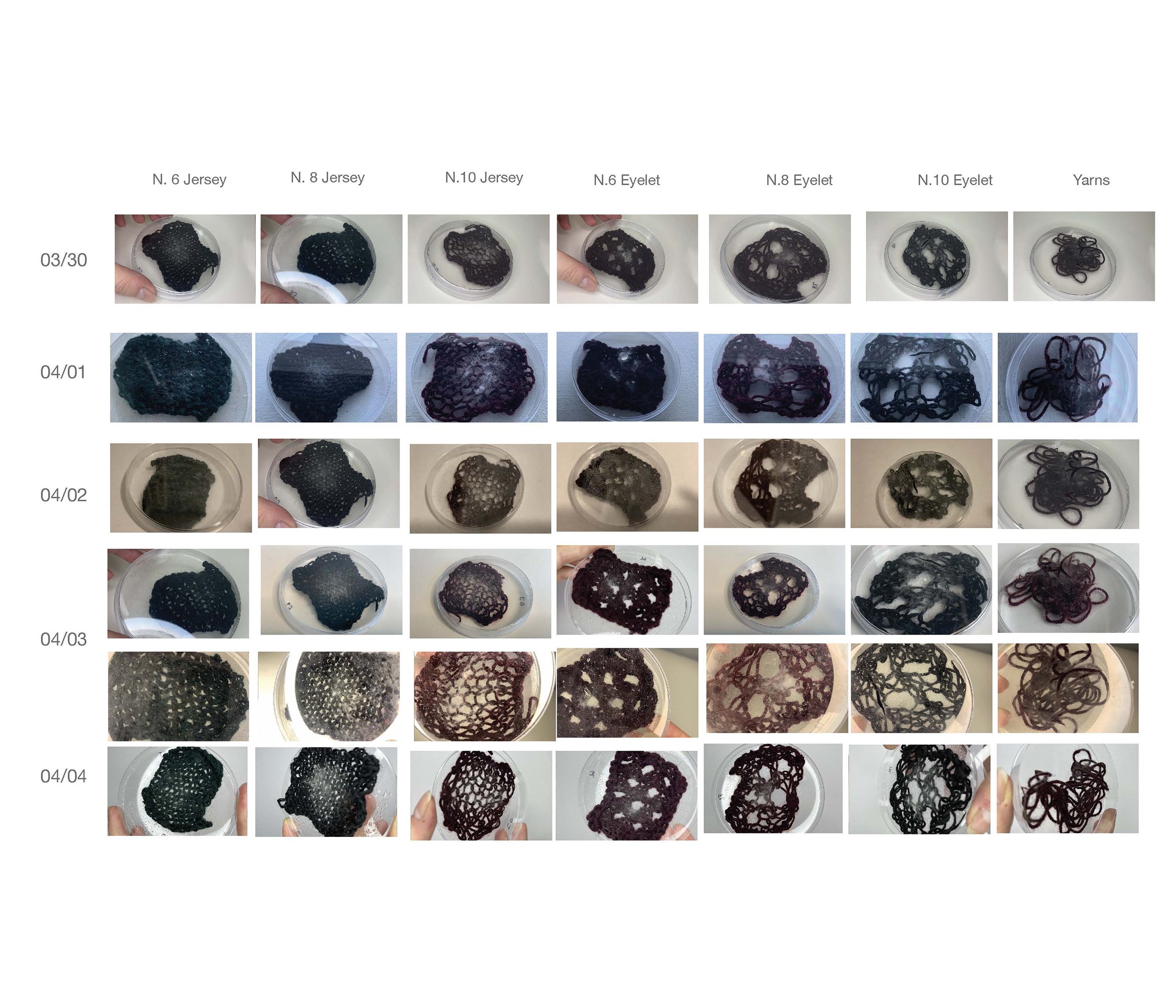
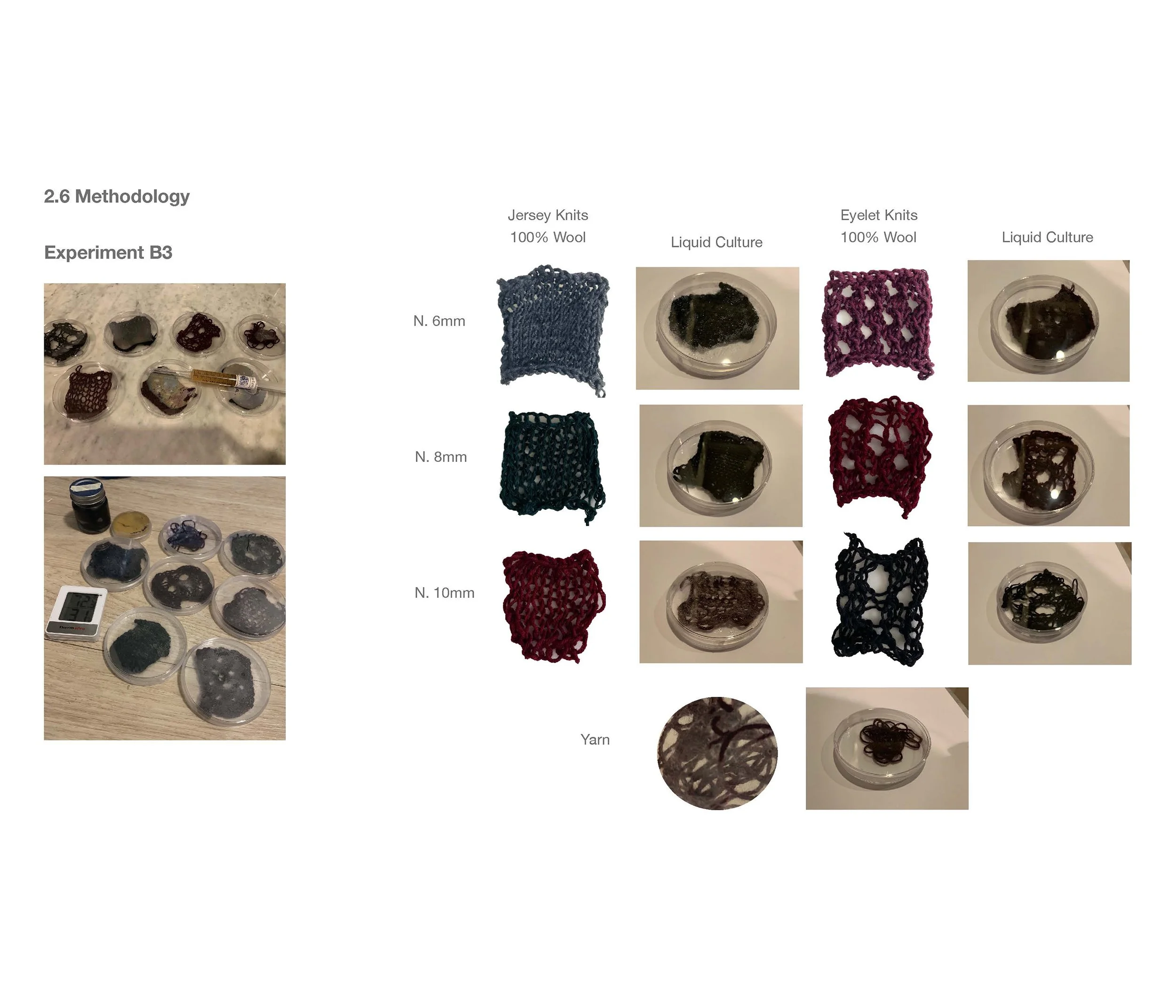
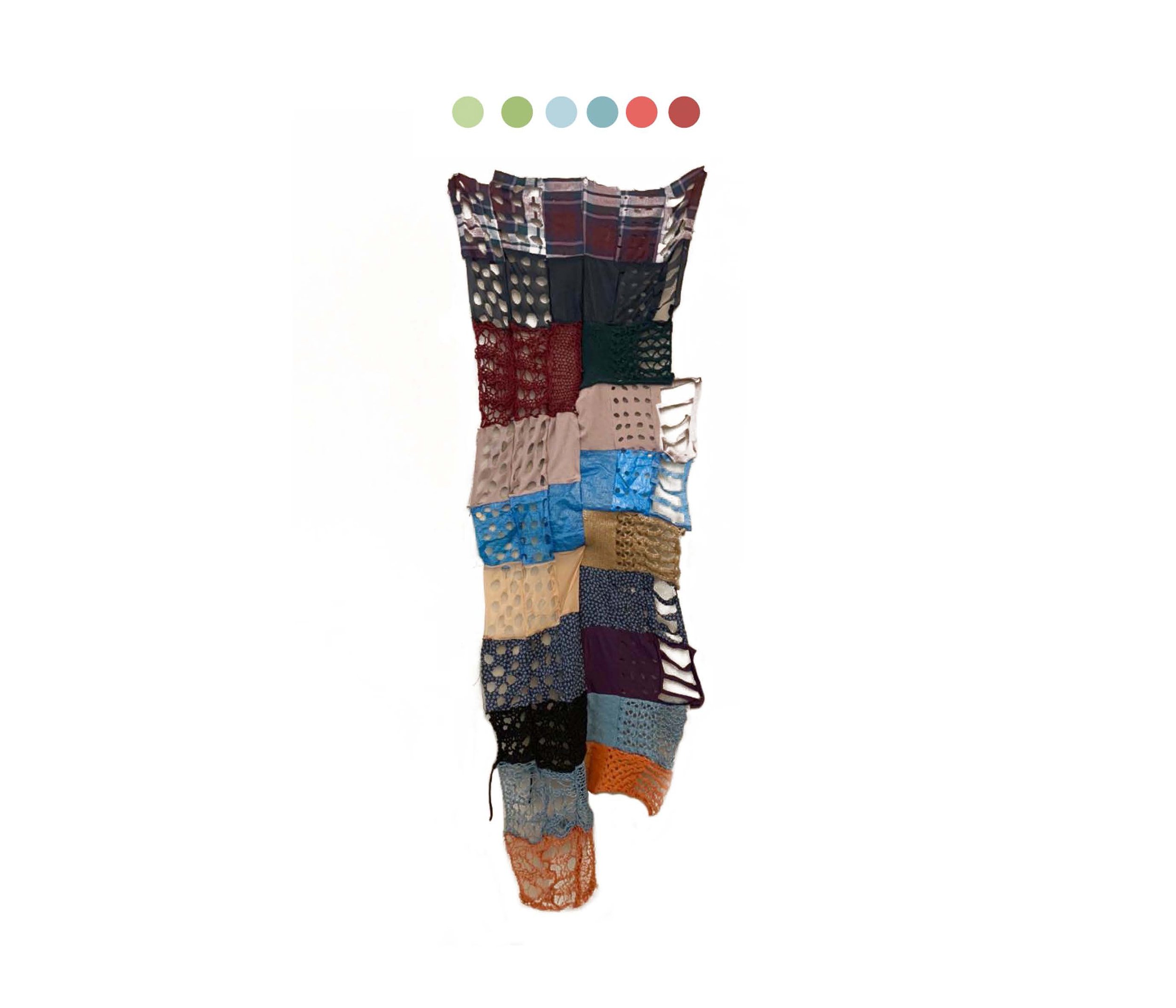
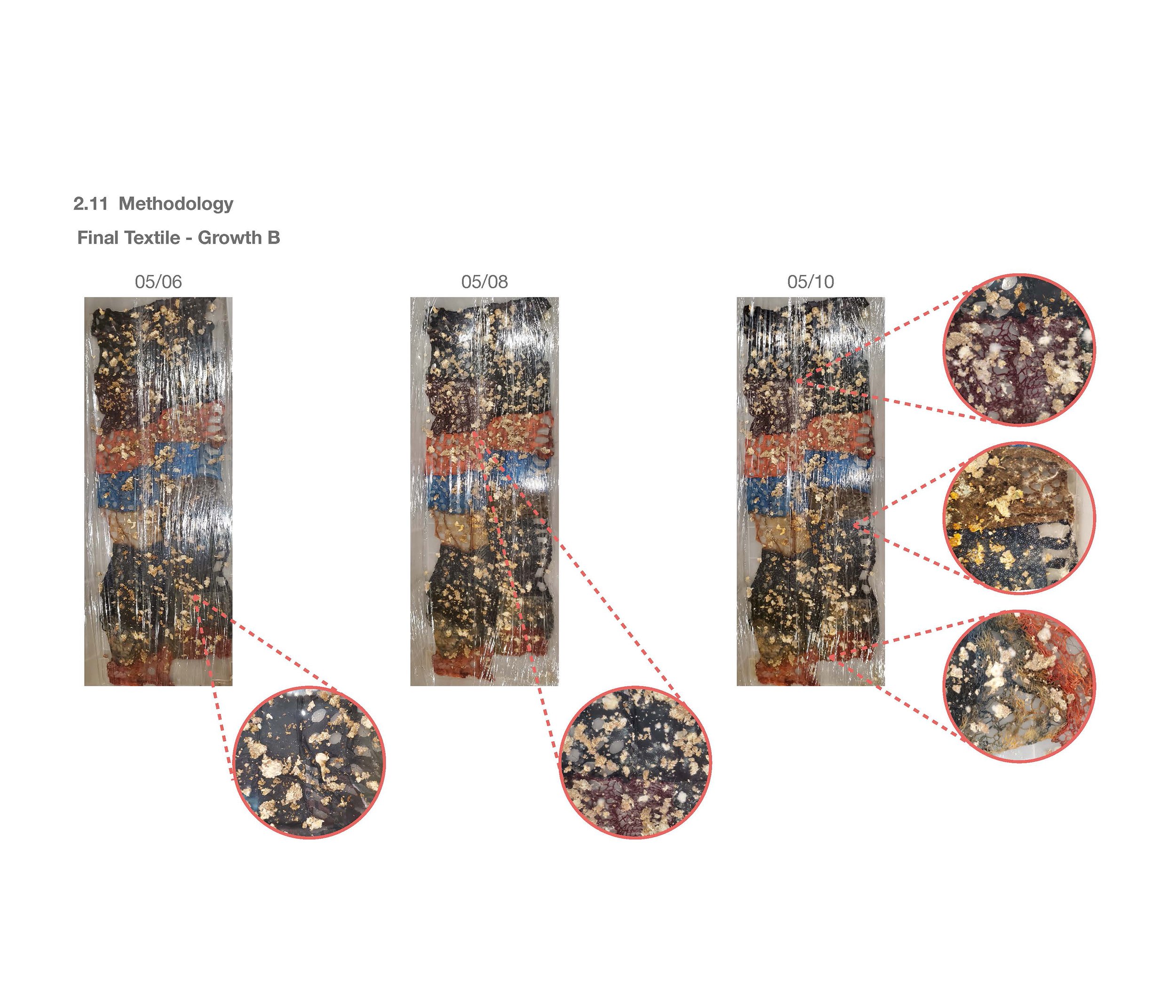

Wine pomace upcycled into paper-like biomaterial.
As our seasons change, and our clocks and crops rotate, history is written. A New Vintage holds memories of the local landscape and repurposes waste sourced from local vineyards.
Bacteria Dyed Yarn
Serratia marcescens bacteria producing pigment for dyeing textile fiber.




